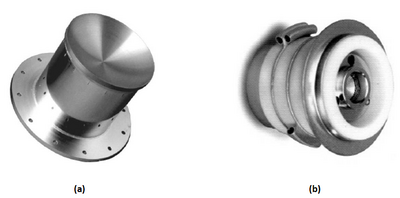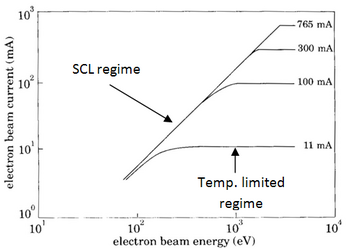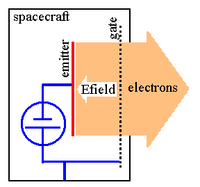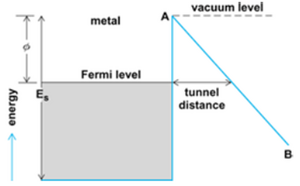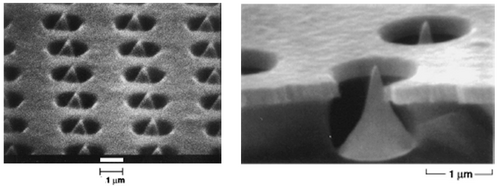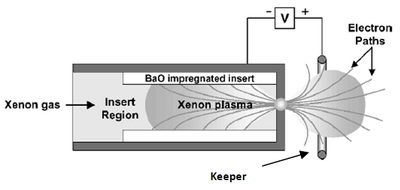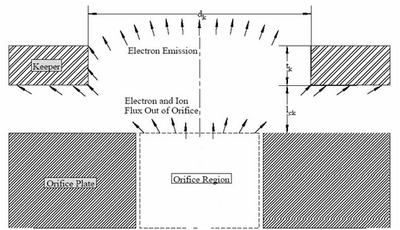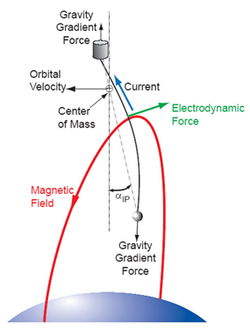The ionosphere (/aɪˈɒnəˌsfɪər/)
is the ionized part of Earth's upper atmosphere, from about 60 km
(37 mi) to 1,000 km (620 mi) altitude, a region that includes the thermosphere and parts of the mesosphere and exosphere. The ionosphere is ionized by solar radiation. It plays an important role in atmospheric electricity and forms the inner edge of the magnetosphere. It has practical importance because, among other functions, it influences radio propagation to distant places on the Earth. The region below the ionosphere is called neutral atmosphere, or neutrosphere.
Relationship of the atmosphere and ionosphere
History of discovery
As early as 1839, the German mathematician and physicist Carl Friedrich Gauss
postulated that an electrically conducting region of the atmosphere
could account for observed variations of Earth's magnetic field. Sixty
years later, Guglielmo Marconi received the first trans-Atlantic radio signal on December 12, 1901, in St. John's, Newfoundland (now in Canada) using a 152.4 m (500 ft) kite-supported antenna for reception. The transmitting station in Poldhu, Cornwall, used a spark-gap transmitter to produce a signal with a frequency of approximately 500 kHz and a power of 100 times more than any radio signal previously produced. The message received was three dits, the Morse code for the letter S. To reach Newfoundland the signal would have to bounce off the ionosphere twice. Dr. Jack Belrose has contested this, however, based on theoretical and experimental work. However, Marconi did achieve transatlantic wireless communications in Glace Bay, Nova Scotia, one year later.
In 1902, Oliver Heaviside proposed the existence of the Kennelly–Heaviside layer
of the ionosphere which bears his name. Heaviside's proposal included
means by which radio signals are transmitted around the Earth's
curvature. Heaviside's proposal, coupled with Planck's law of black-body radiation, may have hampered the growth of radio astronomy for the detection of electromagnetic waves from celestial bodies until 1932 (and the development of high-frequency radio transceivers). Also in 1902, Arthur Edwin Kennelly discovered some of the ionosphere's radio-electrical properties.
In 1912, the U.S. Congress imposed the Radio Act of 1912 on amateur radio operators, limiting their operations to frequencies above 1.5 MHz (wavelength 200 meters or smaller). The government thought those frequencies were useless. This led to the discovery of HF radio propagation via the ionosphere in 1923.
In 1926, Scottish physicist Robert Watson-Watt introduced the term ionosphere in a letter published only in 1969 in Nature:
We have in quite recent years seen the universal adoption of the term 'stratosphere'..and..the companion term 'troposphere'... The term 'ionosphere', for the region in which the main characteristic is large scale ionisation with considerable mean free paths, appears appropriate as an addition to this series.
In the early 1930s, test transmissions of Radio Luxembourg inadvertently provided evidence of the first radio modification of the ionosphere; HAARP ran a series of experiments in 2017 using the eponymous Luxembourg Effect.
Edward V. Appleton was awarded a Nobel Prize in 1947 for his confirmation in 1927 of the existence of the ionosphere. Lloyd Berkner
first measured the height and density of the ionosphere. This permitted
the first complete theory of short-wave radio propagation. Maurice V. Wilkes and J. A. Ratcliffe researched the topic of radio propagation of very long radio waves in the ionosphere. Vitaly Ginzburg has developed a theory of electromagnetic wave propagation in plasmas such as the ionosphere.
In 1962, the Canadian satellite Alouette 1 was launched to study the ionosphere. Following its success were Alouette 2 in 1965 and the two ISIS satellites in 1969 and 1971, further AEROS-A and -B in 1972 and 1975, all for measuring the ionosphere.
On July 26, 1963 the first operational geosynchronous satellite Syncom 2 was launched. The board radio beacons on this satellite (and its successors) enabled – for the first time – the measurement of total electron content
(TEC) variation along a radio beam from geostationary orbit to an earth
receiver. (The rotation of the plane of polarization directly measures
TEC along the path.) Australian geophysicist Elizabeth Essex-Cohen from
1969 onwards was using this technique to monitor the atmosphere above
Australia and Antarctica.
Geophysics
The ionosphere is a shell of electrons and electrically charged atoms and molecules
that surrounds the Earth, stretching from a height of about 50 km
(31 mi) to more than 1,000 km (620 mi). It exists primarily due to ultraviolet radiation from the Sun.
The lowest part of the Earth's atmosphere, the troposphere extends from the surface to about 10 km (6.2 mi). Above that is the stratosphere, followed by the mesosphere. In the stratosphere incoming solar radiation creates the ozone layer. At heights of above 80 km (50 mi), in the thermosphere,
the atmosphere is so thin that free electrons can exist for short
periods of time before they are captured by a nearby positive ion. The number of these free electrons is sufficient to affect radio propagation. This portion of the atmosphere is partially ionized and contains a plasma which is referred to as the ionosphere.
Ultraviolet (UV), X-ray and shorter wavelengths of solar radiation are ionizing, since photons
at these frequencies contain sufficient energy to dislodge an electron
from a neutral gas atom or molecule upon absorption. In this process the
light electron obtains a high velocity so that the temperature
of the created electronic gas is much higher (of the order of thousand
K) than the one of ions and neutrals. The reverse process to ionization is recombination,
in which a free electron is "captured" by a positive ion. Recombination
occurs spontaneously, and causes the emission of a photon carrying away
the energy produced upon recombination. As gas density increases at
lower altitudes, the recombination process prevails, since the gas
molecules and ions are closer together. The balance between these two
processes determines the quantity of ionization present.
Ionization depends primarily on the Sun and its activity. The amount of ionization in the ionosphere varies greatly with the amount of radiation received from the Sun. Thus there is a diurnal (time of day) effect and a seasonal effect. The local winter hemisphere is tipped away from the Sun, thus there is less received solar radiation. The activity of the Sun is associated with the sunspot cycle, with more radiation occurring with more sunspots. Radiation received also varies with geographical location (polar, auroral zones, mid-latitudes,
and equatorial regions). There are also mechanisms that disturb the
ionosphere and decrease the ionization. There are disturbances such as solar flares and the associated release of charged particles into the solar wind which reaches the Earth and interacts with its geomagnetic field.
Layers of ionization
Ionospheric layers.
At night the F layer is the only layer of significant ionization
present, while the ionization in the E and D layers is extremely low.
During the day, the D and E layers become much more heavily ionized, as
does the F layer, which develops an additional, weaker region of
ionisation known as the F1 layer. The F2 layer persists by day and night and is the main region responsible for the refraction and reflection of radio waves.
D layer
The D layer is the innermost layer, 60 km (37 mi) to 90 km (56 mi) above the surface of the Earth. Ionization here is due to Lyman series-alpha hydrogen radiation at a wavelength of 121.6 nanometre (nm) ionizing nitric oxide (NO). In addition, high solar activity can generate hard X-rays (wavelength < 1 nm) that ionize N2 and O2. Recombination rates are high in the D layer, so there are many more neutral air molecules than ions.
Medium frequency (MF) and lower high frequency (HF) radio waves
are significantly attenuated within the D layer, as the passing radio
waves cause electrons to move, which then collide with the neutral
molecules, giving up their energy. Lower frequencies experience greater
absorption because they move the electrons farther, leading to greater
chance of collisions. This is the main reason for absorption of HF radio waves,
particularly at 10 MHz and below, with progressively less absorption at
higher frequencies. This effect peaks around noon and is reduced at
night due to a decrease in the D layer's thickness; only a small part
remains due to cosmic rays. A common example of the D layer in action is the disappearance of distant AM broadcast band stations in the daytime.
During solar proton events,
ionization can reach unusually high levels in the D-region over high
and polar latitudes. Such very rare events are known as Polar Cap
Absorption (or PCA) events, because the increased ionization
significantly enhances the absorption of radio signals passing through
the region. In fact, absorption levels can increase by many tens of dB during
intense events, which is enough to absorb most (if not all) transpolar
HF radio signal transmissions. Such events typically last less than 24
to 48 hours.
E layer
The E layer
is the middle layer, 90 km (56 mi) to 150 km (93 mi) above the surface
of the Earth. Ionization is due to soft X-ray (1–10 nm) and far
ultraviolet (UV) solar radiation ionization of molecular oxygen (O2).
Normally, at oblique incidence, this layer can only reflect radio waves
having frequencies lower than about 10 MHz and may contribute a bit to
absorption on frequencies above. However, during intense sporadic E events, the Es
layer can reflect frequencies up to 50 MHz and higher. The vertical
structure of the E layer is primarily determined by the competing
effects of ionization and recombination. At night the E layer weakens
because the primary source of ionization is no longer present. After
sunset an increase in the height of the E layer maximum increases the
range to which radio waves can travel by reflection from the layer.
This region is also known as the Kennelly–Heaviside layer
or simply the Heaviside layer. Its existence was predicted in 1902
independently and almost simultaneously by the American electrical
engineer Arthur Edwin Kennelly (1861–1939) and the British physicist Oliver Heaviside (1850–1925). However, it was not until 1924 that its existence was detected by Edward V. Appleton and Miles Barnett.
Es
The Es layer (sporadic
E-layer) is characterized by small, thin clouds of intense ionization,
which can support reflection of radio waves, rarely up to 225 MHz.
Sporadic-E events may last for just a few minutes to several hours. Sporadic E propagation makes VHF-operating radio amateurs
very excited, as propagation paths that are generally unreachable can
open up. There are multiple causes of sporadic-E that are still being
pursued by researchers. This propagation occurs most frequently during
the summer months when high signal levels may be reached. The skip
distances are generally around 1,640 km (1,020 mi). Distances for one
hop propagation can be anywhere from 900 km (560 mi) to 2,500 km
(1,600 mi). Double-hop reception over 3,500 km (2,200 mi) is possible.
F layer
The F layer
or region, also known as the Appleton–Barnett layer, extends from about
150 km (93 mi) to more than 500 km (310 mi) above the surface of Earth.
It is the layer with the highest electron density, which implies
signals penetrating this layer will escape into space. Electron
production is dominated by extreme ultraviolet (UV, 10–100 nm) radiation ionizing atomic oxygen. The F layer consists of one layer (F2) at night, but during the day, a secondary peak (labelled F1) often forms in the electron density profile. Because the F2 layer remains by day and night, it is responsible for most skywave propagation of radio waves and long distance high frequency (HF, or shortwave) radio communications.
Above the F layer, the number of oxygen ions decreases and lighter ions such as hydrogen and helium become dominant. This region above the F layer peak and below the plasmasphere is called the topside ionosphere.
From 1972 to 1975 NASA launched the AEROS and AEROS B satellites to study the F region.
Ionospheric model
An ionospheric model
is a mathematical description of the ionosphere as a function of
location, altitude, day of year, phase of the sunspot cycle and
geomagnetic activity. Geophysically, the state of the ionospheric plasma may be described by four parameters: electron density, electron and ion temperature and, since several species of ions are present, ionic composition. Radio propagation depends uniquely on electron density.
Models are usually expressed as computer programs. The model may
be based on basic physics of the interactions of the ions and electrons
with the neutral atmosphere and sunlight, or it may be a statistical
description based on a large number of observations or a combination of
physics and observations. One of the most widely used models is the International Reference Ionosphere (IRI), which is based on data and specifies the four parameters just mentioned. The IRI is an international project sponsored by the Committee on Space Research (COSPAR) and the International Union of Radio Science (URSI). The major data sources are the worldwide network of ionosondes, the powerful incoherent scatter radars (Jicamarca, Arecibo, Millstone Hill, Malvern, St Santin), the ISIS and Alouette topside sounders,
and in situ instruments on several satellites and rockets. IRI is
updated yearly. IRI is more accurate in describing the variation of the
electron density from bottom of the ionosphere to the altitude of
maximum density than in describing the total electron content (TEC). Since 1999 this model is "International Standard" for the terrestrial ionosphere (standard TS16457).
Persistent anomalies to the idealized model
Ionograms allow deducing, via computation, the true shape of the different layers. Nonhomogeneous structure of the electron/ion-plasma produces rough echo traces, seen predominantly at night and at higher latitudes, and during disturbed conditions.
Winter anomaly
At mid-latitudes, the F2
layer daytime ion production is higher in the summer, as expected,
since the Sun shines more directly on the Earth. However, there are
seasonal changes in the molecular-to-atomic ratio of the neutral
atmosphere that cause the summer ion loss rate to be even higher. The
result is that the increase in the summertime loss overwhelms the
increase in summertime production, and total F2 ionization is
actually lower in the local summer months. This effect is known as the
winter anomaly. The anomaly is always present in the northern
hemisphere, but is usually absent in the southern hemisphere during
periods of low solar activity.
Equatorial anomaly
Within approximately ± 20 degrees of the magnetic equator, is the equatorial anomaly. It is the occurrence of a trough in the ionization in the F2 layer at the equator and crests at about 17 degrees in magnetic latitude. The Earth's magnetic field lines are horizontal at the magnetic equator. Solar heating and tidal
oscillations in the lower ionosphere move plasma up and across the
magnetic field lines. This sets up a sheet of electric current in the E
region which, with the horizontal
magnetic field, forces ionization up into the F layer, concentrating at
± 20 degrees from the magnetic equator. This phenomenon is known as the
equatorial fountain.
Equatorial electrojet
The
worldwide solar-driven wind results in the so-called Sq (solar quiet)
current system in the E region of the Earth's ionosphere (ionospheric dynamo region)
(100–130 km (62–81 mi) altitude). Resulting from this current is an
electrostatic field directed west–east (dawn–dusk) in the equatorial day
side of the ionosphere. At the magnetic dip equator, where the
geomagnetic field is horizontal, this electric field results in an
enhanced eastward current flow within ± 3 degrees of the magnetic
equator, known as the equatorial electrojet.
Ephemeral ionospheric perturbations
X-rays: sudden ionospheric disturbances (SID)
When the Sun is active, strong solar flares
can occur that hit the sunlit side of Earth with hard X-rays. The
X-rays penetrate to the D-region, releasing electrons that rapidly
increase absorption, causing a high frequency (3–30 MHz) radio blackout.
During this time very low frequency (3–30 kHz) signals will be
reflected by the D layer instead of the E layer, where the increased
atmospheric density will usually increase the absorption of the wave and
thus dampen it. As soon as the X-rays end, the sudden ionospheric disturbance (SID) or radio black-out ends as the electrons in the D-region recombine rapidly and signal strengths return to normal.
Protons: polar cap absorption (PCA)
Associated
with solar flares is a release of high-energy protons. These particles
can hit the Earth within 15 minutes to 2 hours of the solar flare. The
protons spiral around and down the magnetic field lines of the Earth and
penetrate into the atmosphere near the magnetic poles increasing the
ionization of the D and E layers. PCA's typically last anywhere from
about an hour to several days, with an average of around 24 to 36 hours.
Coronal mass ejections can also release energetic protons that enhance D-region absorption in the polar regions.
Geomagnetic storms
A geomagnetic storm is a temporary intense disturbance of the Earth's magnetosphere.
- During a geomagnetic storm the F₂ layer will become unstable, fragment, and may even disappear completely.
- In the Northern and Southern pole regions of the Earth aurorae will be observable in the sky.
Lightning
Lightning
can cause ionospheric perturbations in the D-region in one of two ways.
The first is through VLF (very low frequency) radio waves launched into
the magnetosphere.
These so-called "whistler" mode waves can interact with radiation belt
particles and cause them to precipitate onto the ionosphere, adding
ionization to the D-region. These disturbances are called
"lightning-induced electron precipitation" (LEP) events.
Additional ionization can also occur from direct
heating/ionization as a result of huge motions of charge in lightning
strikes. These events are called early/fast.
In 1925, C. T. R. Wilson proposed a mechanism by which electrical
discharge from lightning storms could propagate upwards from clouds to
the ionosphere. Around the same time, Robert Watson-Watt, working at the
Radio Research Station in Slough, UK, suggested that the ionospheric
sporadic E layer (Es) appeared to be enhanced as a result of
lightning but that more work was needed. In 2005, C. Davis and C.
Johnson, working at the Rutherford Appleton Laboratory in Oxfordshire,
UK, demonstrated that the Es layer was indeed enhanced as a
result of lightning activity. Their subsequent research has focused on
the mechanism by which this process can occur.
Applications
Radio communication
Due to the ability of ionized atmospheric gases to refract high frequency (HF, or shortwave)
radio waves, the ionosphere can reflect radio waves directed into the
sky back toward the Earth. Radio waves directed at an angle into the
sky can return to Earth beyond the horizon. This technique, called
"skip" or "skywave"
propagation, has been used since the 1920s to communicate at
international or intercontinental distances. The returning radio waves
can reflect off the Earth's surface into the sky again, allowing greater
ranges to be achieved with multiple hops.
This communication method is variable and unreliable, with reception
over a given path depending on time of day or night, the seasons,
weather, and the 11-year sunspot cycle.
During the first half of the 20th century it was widely used for
transoceanic telephone and telegraph service, and business and
diplomatic communication. Due to its relative unreliability, shortwave
radio communication has been mostly abandoned by the telecommunications
industry, though it remains important for high-latitude communication
where satellite-based radio communication is not possible. Some
broadcasting stations and automated services still use shortwave radio frequencies, as do radio amateur hobbyists for private recreational contacts.
Mechanism of refraction
When a radio wave reaches the ionosphere, the electric field in the wave forces the electrons in the ionosphere into oscillation
at the same frequency as the radio wave. Some of the radio-frequency
energy is given up to this resonant oscillation. The oscillating
electrons will then either be lost to recombination or will re-radiate
the original wave energy. Total refraction can occur when the collision
frequency of the ionosphere is less than the radio frequency, and if the
electron density in the ionosphere is great enough.
A qualitative understanding of how an electromagnetic wave propagates through the ionosphere can be obtained by recalling geometric optics. Since the ionosphere is a plasma, it can be shown that the refractive index
is less than unity. Hence, the electromagnetic "ray" is bent away from
the normal rather than toward the normal as would be indicated when the
refractive index is greater than unity. It can also be shown that the
refractive index of a plasma, and hence the ionosphere, is
frequency-dependent, see Dispersion (optics).
The critical frequency is the limiting frequency at or below which a radio wave is reflected by an ionospheric layer at vertical incidence. If the transmitted frequency is higher than the plasma frequency
of the ionosphere, then the electrons cannot respond fast enough, and
they are not able to re-radiate the signal. It is calculated as shown
below:
where N = electron density per m3 and fcritical is in Hz.
The Maximum Usable Frequency (MUF) is defined as the upper
frequency limit that can be used for transmission between two points at a
specified time.
where = angle of attack, the angle of the wave relative to the horizon, and sin is the sine function.
The cutoff frequency
is the frequency below which a radio wave fails to penetrate a layer of
the ionosphere at the incidence angle required for transmission between
two specified points by refraction from the layer.
Other applications
The open system electrodynamic tether, which uses the ionosphere, is being researched. The space tether uses plasma contactors and the ionosphere as parts of a circuit to extract energy from the Earth's magnetic field by electromagnetic induction.
Measurements
Overview
Scientists explore the structure of the ionosphere by a wide variety of methods. They include:
- passive observations of optical and radio emissions generated in the ionosphere
- bouncing radio waves of different frequencies from it
- incoherent scatter radars such as the EISCAT, Sondre Stromfjord, Millstone Hill, Arecibo, Advanced Modular Incoherent Scatter Radar (AMISR) and Jicamarca radars
- coherent scatter radars such as the Super Dual Auroral Radar Network (SuperDARN) radars,
- special receivers to detect how the reflected waves have changed from the transmitted waves.
A variety of experiments, such as HAARP (High Frequency Active Auroral Research Program),
involve high power radio transmitters to modify the properties of the
ionosphere. These investigations focus on studying the properties and
behavior of ionospheric plasma, with particular emphasis on being able
to understand and use it to enhance communications and surveillance
systems for both civilian and military purposes. HAARP was started in
1993 as a proposed twenty-year experiment, and is currently active near
Gakona, Alaska.
The SuperDARN radar project researches the high- and
mid-latitudes using coherent backscatter of radio waves in the 8 to
20 MHz range. Coherent backscatter is similar to Bragg scattering in
crystals and involves the constructive interference of scattering from
ionospheric density irregularities. The project involves more than 11
different countries and multiple radars in both hemispheres.
Scientists are also examining the ionosphere by the changes to radio waves, from satellites and stars, passing through it. The Arecibo radio telescope located in Puerto Rico, was originally intended to study Earth's ionosphere.
Ionograms
Ionograms show the virtual heights and critical frequencies of the ionospheric layers and which are measured by an ionosonde.
An ionosonde sweeps a range of frequencies, usually from 0.1 to 30 MHz,
transmitting at vertical incidence to the ionosphere. As the frequency
increases, each wave is refracted less by the ionization in the layer,
and so each penetrates further before it is reflected. Eventually, a
frequency is reached that enables the wave to penetrate the layer
without being reflected. For ordinary mode waves, this occurs when the
transmitted frequency just exceeds the peak plasma, or critical,
frequency of the layer. Tracings of the reflected high frequency radio
pulses are known as ionograms. Reduction rules are given in: "URSI
Handbook of Ionogram Interpretation and Reduction", edited by William Roy Piggott and Karl Rawer, Elsevier Amsterdam, 1961 (translations into Chinese, French, Japanese and Russian are available).
Incoherent scatter radars
Incoherent scatter
radars operate above the critical frequencies. Therefore, the technique
allows probing the ionosphere, unlike ionosondes, also above the
electron density peaks. The thermal fluctuations of the electron density
scattering the transmitted signals lack coherence,
which gave the technique its name. Their power spectrum contains
information not only on the density, but also on the ion and electron
temperatures, ion masses and drift velocities.
GNSS radio occultation
Radio occultation
is a remote sensing technique where a GNSS signal tangentially scrapes
the Earth, passing through the atmosphere, and is received by a Low
Earth Orbit (LEO) satellite. As the signal passes through the
atmosphere, it is refracted, curved and delayed. An LEO satellite
samples the total electron content and bending angle of many such signal
paths as it watches the GNSS satellite rise or set behind the Earth.
Using an Inverse Abel's transform, a radial profile of refractivity at that tangent point on earth can be reconstructed.
Indices of the ionosphere
In
empirical models of the ionosphere such as Nequick, the following
indices are used as indirect indicators of the state of the ionosphere.
Solar intensity
F10.7
and R12 are two indices commonly used in ionospheric modelling. Both
are valuable for their long historical records covering multiple solar
cycles. F10.7 is a measurement of the intensity of solar radio emissions
at a frequency of 2800 MHz made using a ground radio telescope. R12 is a 12 months average of daily sunspot numbers. Both indices have been shown to be correlated to each other.
However, both indices are only indirect indicators of solar
ultraviolet and X-ray emissions, which are primarily responsible for
causing ionization in the Earth's upper atmosphere. We now have data
from the GOES spacecraft that measures the background X-ray flux from the Sun, a parameter more closely related to the ionization levels in the ionosphere.
Geomagnetic disturbances
- The A- and K-indices are a measurement of the behavior of the horizontal component of the geomagnetic field. The K-index uses a scale from 0 to 9 to measure the change in the horizontal component of the geomagnetic field. A new K-index is determined at the Boulder Geomagnetic Observatory.
- The geomagnetic activity levels of the Earth are measured by the fluctuation of the Earth's magnetic field in SI units called teslas (or in non-SI gauss, especially in older literature). The Earth's magnetic field is measured around the planet by many observatories. The data retrieved is processed and turned into measurement indices. Daily measurements for the entire planet are made available through an estimate of the Ap-index, called the planetary A-index (PAI).
GPS/GNSS ionospheric correction
There are a number of models used to understand the effects of the
ionosphere global navigation satellite systems. The Klobuchar model is
currently used to compensate for ionospheric effects in GPS. This model was developed at the US Air Force Geophysical Research Laboratory circa 1974 by John (Jack) Klobuchar. The Galileo navigation system uses the NeQuick model.
Ionospheres of other planets and natural satellites
Objects in the Solar System that have appreciable atmospheres (i.e., all of the major planets and many of the larger natural satellites) generally produce ionospheres. Planets known to have ionospheres include Venus,
Uranus, Mars and Jupiter.
The atmosphere of Titan includes an ionosphere that ranges from about 1,100 km (680 mi) to 1,300 km (810 mi) in altitude and contains carbon compounds.


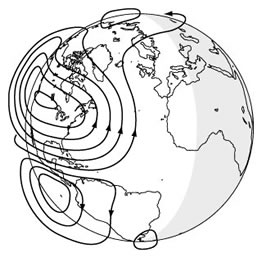




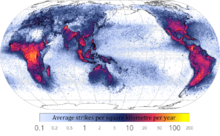

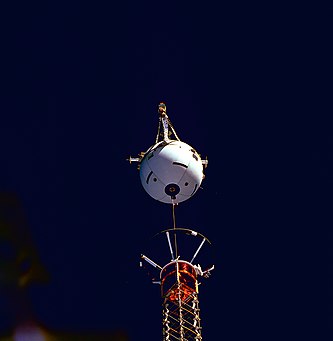
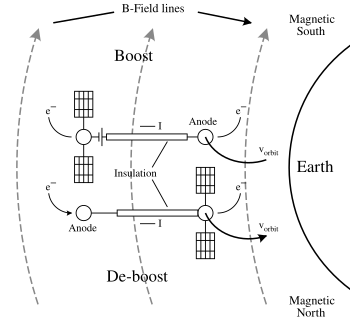















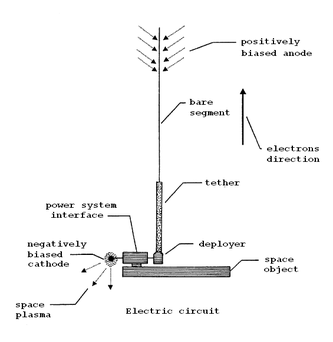


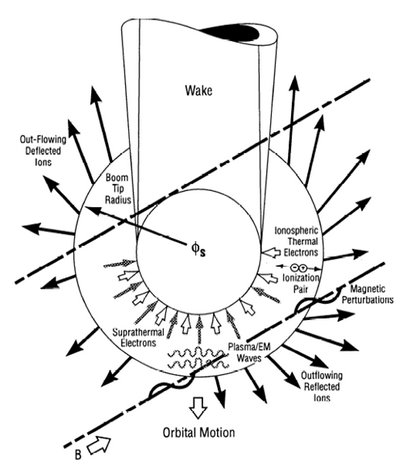

![\Delta V_{{tc}}=\left[{\frac {\eta \cdot I_{t}}{\rho }}\right]^{{2/3}}](https://wikimedia.org/api/rest_v1/media/math/render/svg/931b24458ba4aeea5700e8321ee49da84aa2315d)
